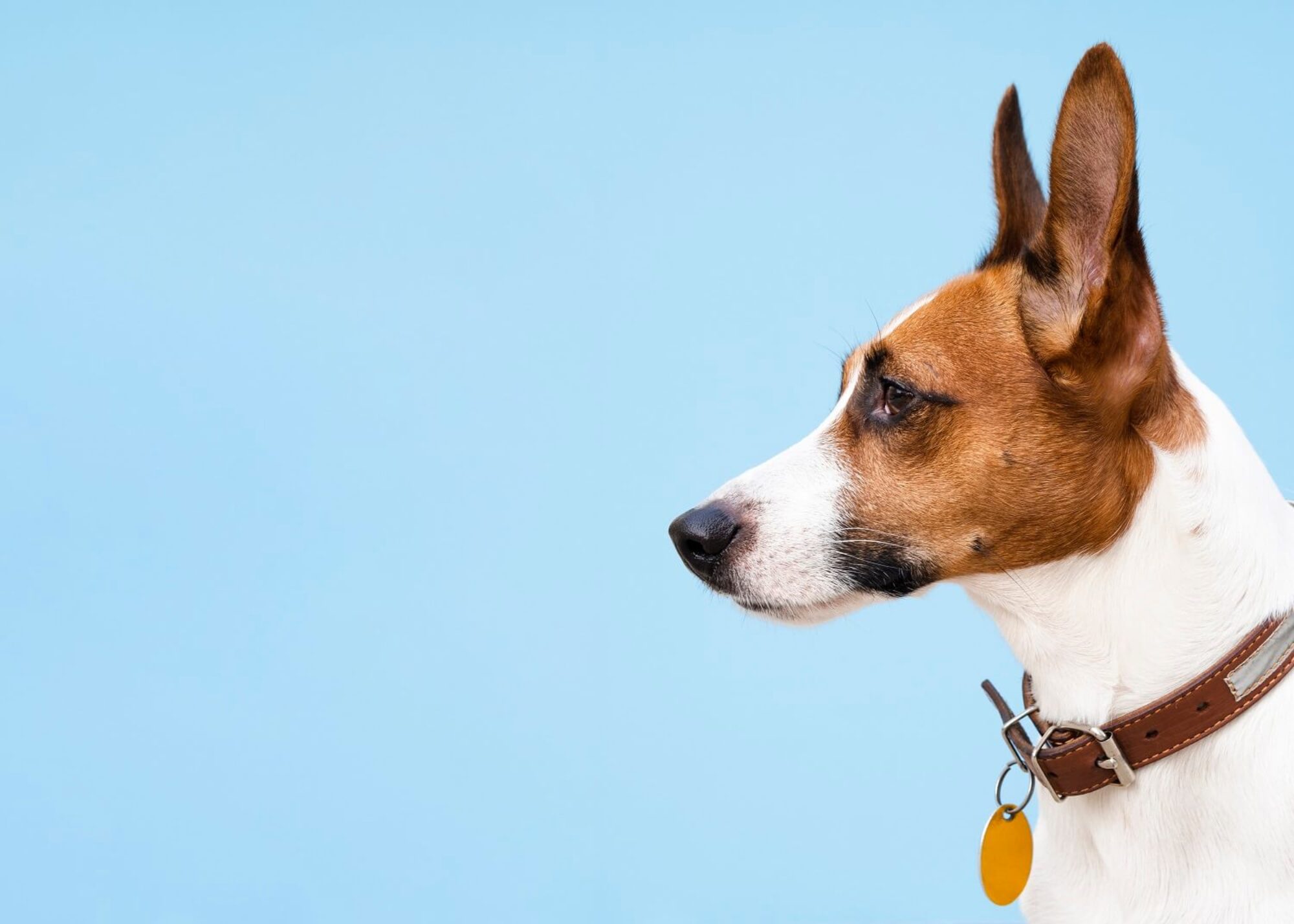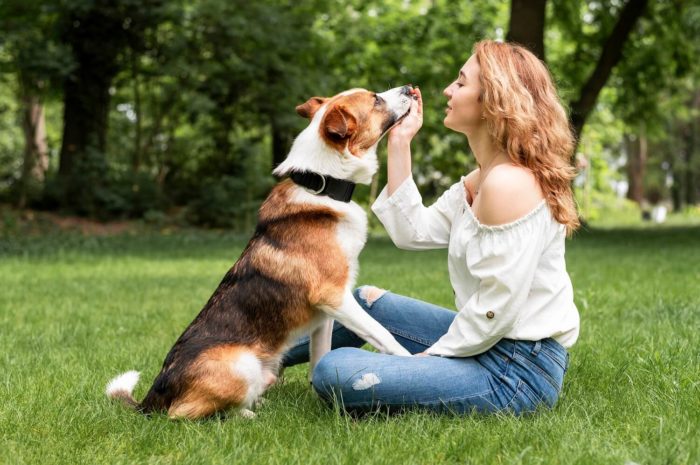Backchaining – a tool to success in animal training!
When we are teaching our dogs new behaviors, we often focus on the small components of each behavior. If we want to teach the dog to go to a mat, a popular choice would be, to teach the dog to lay down separately, and go to mat separately. Splitting the behavior into smaller parts, makes it more likely for the dogs to succeed, as they don’t have to figure many things out at the same time. Likewise, if we were to teach the dog to go into a sitting heel position, we can split it, and teach the sitting next to the handler, the sideward or backward movement, and the focus next to the handler, separately. This makes really good sense, as we would make it much more difficult for the dog if we expected to get all of these behaviors at once. Now we have a dog, who is able to do all of the behaviors needed, for the goal behavior, but how do we then combine all of it?
Backchaining is a great option for that.
If you have been teaching your dog to do all of the behaviors, using positive reinforcement, you are completely able to backchain the above examples, and so many other things. Why does it work? SD (discriminative stimulus) is a stimulus that tells the learner, that accurately now, a certain behavior will have certain consequences. If a stimulus often is present when a behavior is reinforced, that stimulus will eventually become a SD for that behavior. We can then say, that stimuli has «control» over the behavior (which is why we say stimulus control). A SD will also become a conditioned reinforcer. Cues that have been taught with positive reinforcement, will be a positive SD for our learners. This doesn’t only go for our verbal cues. Putting on our coat is also a SD. SD´s (both being cues from the handler and from the environment), thereby gets a double function in the chain.
- They reinforce the previous behavior
- They start the next behavior
This double function is the «glue» that holds backchained behavior chains together If we revisit the “go to mat” and “heel position”, it would look like this:
| – SD | – Behavior | – (Conditioned) Reinforcer |
| – Handler cues “mat” | – Dog moves to the mat | – Arrives at the mat |
| – Arrives at the mat | – Lays down | – Handler clicks |
Each behavior in the chain gets effectively reinforced, by the next SD, which is also a conditioned reinforcer.
| – SD | – Behavior | – (Conditioned) reinforcer |
| – Sitting in front position | – Sits and waits | – Handler cues “heel” |
| – Handler cues “heel” | – Pivots to next to the handler | – Standing next to the handler |
| – Standing next to handler- | Sit down | – Handler clicks |
Having the cues as green light (both the verbal cues, but also all the others), is the glue. If just one of the cues means, “do it, or else…”, the glue does not work and the chain is going to fall apart, as suddenly the behavior before the threat, is not positively reinforced anymore. But why not? Behaviors and cues that have been trained with punishment also have SD´s. Often it means something like “if you fail to sit when I say it, I will punish you/press you down on the rear end”. That makes the negative SD a conditioned negative reinforcer, signaling the opportunity to avoid punishment, rather than signaling the opportunity to earn reinforcement, as the conditioned positive reinforcer does. It doesn’t take many repetitions to ruin the positive SD, which is why we cannot mix punishment into this. If you teach it with positive reinforcement, and reward your dog for every correct response, but also uses correction when the dog doesn’t get it right, the SD loses its value as a positive reinforcer. And suddenly we cannot use it to get reliable chains anymore. It doesn’t matter how much we reinforce, the SD´s are now threats too. So, for the chain to be strong, we need cues and behaviors that are taught with positive reinforcement.
But why would we use backchaining in the first place?
- Exercises that are backchained are reliable
- That is because of the predictability in the chain of behaviors. The dog always knows exactly which behavior is next, and what he needs to do, to get the green light to go to the next behavior.
- Exercises that are backchained requires less «fixing»
- Once the chain has been learned, we don’t need to go back and try to “trick” the dog into thinking, that we will give treats during the exercise.
- Exercises that are backchained, give shorter latency on the cues, as the dog always knows what behavior is next.
- This is especially valuable if you are working on a chain with verbal cues, or if you plan to compete with your dog.
But really, why does it give us more reliable exercises?
Behaviors with high probability (like the opportunity of eating treats), can reinforce behaviors with lower probability (like recall). This means that the opportunity to perform a high probability behavior can reinforce a low probability behavior. If the dog prefers to do a spin over doing heeling, we can use the possibility of doing a spin to reinforce the heeling behavior. Imagine this: A cone is placed on the grass. You cue your dog to spin when you are next to that cone. Now you move a bit, heel 2 steps till you reach the cone and cue the spin. Then 5, 7 and 10 steps before cueing spin by the cone. If spinning truly was a more likely behavior, we have now used that, to reinforce the dogs heeling behavior, and the dog will be more likely to heel again, as it leads to the opportunity to spin. It all comes down to the Premack Principle, that is: A theory of reinforcement that states – A less desired behavior can be reinforced by the opportunity to engage in a more desired behavior. That means, that if eating treats is more likely than heeling, this can be used for reinforcing the heeling behavior (at least as long as there is no other behaviors that are more likely in this situation – like running after other dogs). It varies any times pr. day, which behaviors are most likely to happen, and it is depending on hunger, stress level etc.
How do we do that?
Backchaining sounds very easy, but it is something that we really have to practice a lot, as it is so easy to click at the wrong time or bring some of our other training habits into it. So, I am giving an example of how to do it here, but I would always recommend, that you get help from your instructor if you want to make sure you are getting off to a great start. In this case, the exercise I want to teach my dog has (at least) 5 behaviors.
- Heeling 10 steps, down in motion, recall to front, hand target, heel position,
The first thing to do is to make sure your dog knows the behaviors that you need in the exercise. If there is any doubt, I will recommend checking that, before you start. To have as few repetitions as possible, I start doing that from the first behavior to the last – So ending with a heel position from the front. By doing it in that order, I have already repeated the heel position before I start my actual chaining, which is beneficial. My chaining then looks like this:
- Heel position from the front. Repeat 5 times (and if you have just repeated that as your last behavior in the above, you can already cross that of your list)
- Hand target – heel position from the front.
- Recall to front – hand target – heel position from front.
- Down in motion (just 1 step) – recall to front – hand target – heel position from front.
- Heeling 1o steps – down in motion – recall to front – hand target – heel position from front.
Be aware that sometimes there are gaps in the transition between the behaviors, that we didn’t expect. In this above example. It could be the hand target from front, that would prove to be more difficult than expected, as many dogs will stand up, to go for the target. If that happens, it’s great news… Then we get to practice more. As we can then take that little part, and practice and chain that too. As with anything else, backchaining is something we need to practice, for us to get good at it. The best thing is if we practice it the right way, which is why I want to encourage everyone to practice a lot of backchaining with humans before you start bringing the dog into the mix. To remember: Proceeding in a chain is reinforcing the dog’s behaviors. If those behaviors are not what you are looking for, then try to get out of the situation, as elegant as possible, e.g. by resetting the dog with a treat. Only behaviors that have been taught using positive reinforcement, will be strong in a chain. When starting out, make sure you chose behaviors that have a high level of fluency and that you already have a reliable verbal cue for (if you need it). Choose 2 or maximum 3 behaviors for your first try – longer chains are easy to get lost in. Video your sessions and take the time to evaluate them afterward. Bring peace to your training and start achieving your goals with pleasure and without frustration, yours and your students! 🙂 Sounds great, right? [CLICK HERE FOR MORE INFO]
See also other posts:
June 30, 2023
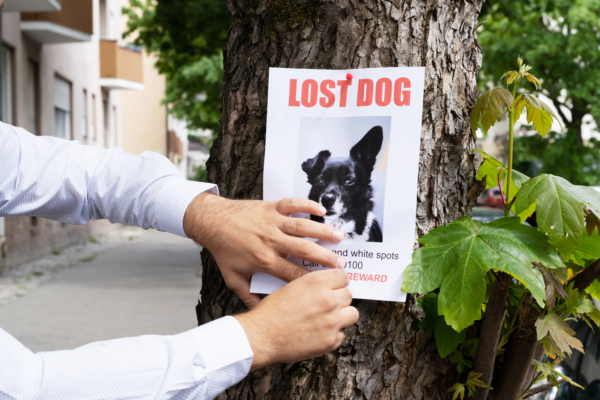
Get Your Lost Dog Back Home Quickly: Follow These 12 Tips for Success
Vacations favor more frequent and longer walks with our furry friends. We travel, visit new places. Summer makes us loosen our brakes and allow our…
June 30, 2023
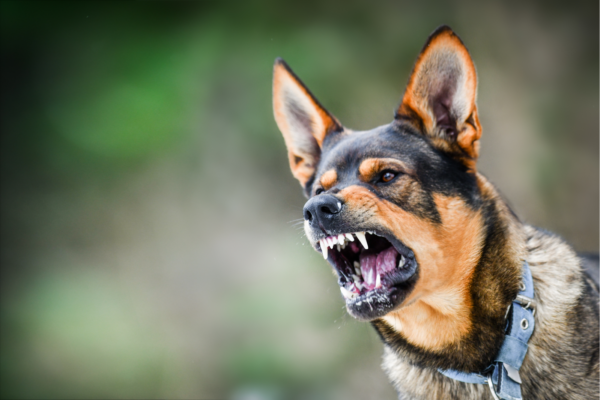
Managing Aggressive Dog Behavior: Tips for Peaceful Living
Living with an aggressive dog may seem challenging, but it can be peaceful and manageable with the right approach. One key aspect is to remain…
June 30, 2023
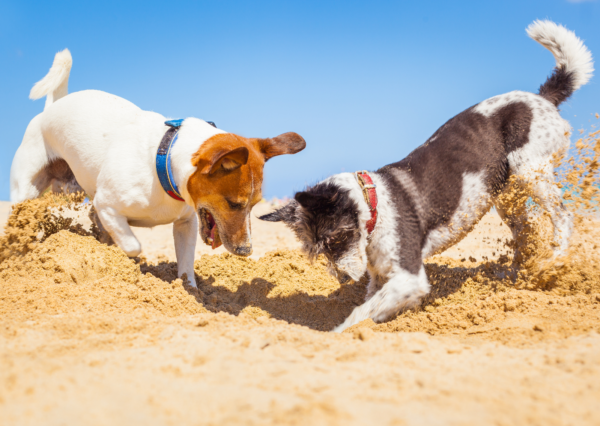
Unlocking the Secret to Successful Puppy Socialization: Quality over Quantity
Today, although the topic is very important, I will keep it brief. Socialization is a topic that could fill books or scientific papers. However, today…

